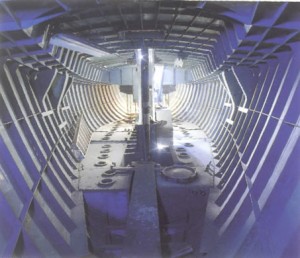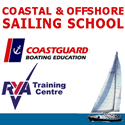A fast passage making blue water sailing vessel. Designed by renowned Auckland yacht designer Alan Mummery, built to rigid international specifications utilising top quality workmanship and materials. Offering venturesome ocean or coastal cruising from the tropics to the Arctic and Antarctic.
Waterline Yachts is owned and operated by Henk Haazen. Henk has commissioned this yacht to cruise and operate in any sailing conditions and region throughout the world. He has personally overseen every stage of the yacht’s construction, his meticulous eye ensuring it has been constructed and detailed to the highest and most exacting specifications. Tiama is a registered New Zealand commercial charter vessel, operating under the New Zealand Maritime safety operator system (MOSS), she is surveyed as an unlimited vessel operating world wide.
DIMENSIONS: Length 15.15 m D.W.L 12.8 m Beam 4.55 m Draft – keel down 3 m Draft – keel up 1.2
Sail Area 142 sq m
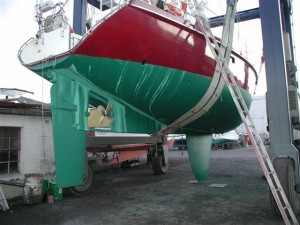 Construction: Welded mild steel to Lloyds scantlings.
Construction: Welded mild steel to Lloyds scantlings.
Survey: Built to N.Z. Ministry of Transport Survey and to the requirements of International Standard ISO 9002, as a class VII ship engaged in international voyages. Registered New Zealand Charter vessel under survey with SGS operating under the New Zealand MOSS safe ship management system
Read more about Tiama’s inventory
TIAMA – Built to work
Designed and built for fast passage making, this yacht has the added versatility of being capable of operating in remote areas. The retractable keel allows the navigation of shallow waters and rivers and the security of sailing in more sheltered waters when operating on remote uncharted coasts. By now Tiama has a proven track record, as boat and its crew have sailed more then 200,000.- nautical miles most of them in the higher latitudes.
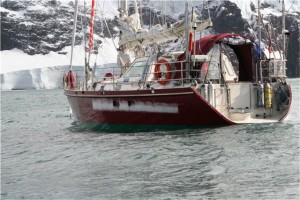 A major feature of the design is the ability of the yacht to operate in extremes of climate and to winter over in the Antarctic or Arctic regions. Hull and decks are insulated and heating is provided by a simple but reliable diesel heater. There is a ventilation system incorporating opening ports and hatches, dorade vents and solar fans.
A major feature of the design is the ability of the yacht to operate in extremes of climate and to winter over in the Antarctic or Arctic regions. Hull and decks are insulated and heating is provided by a simple but reliable diesel heater. There is a ventilation system incorporating opening ports and hatches, dorade vents and solar fans.
The hull shape and appendage design, while illustrating the most efficient forms for speed, seakeeping, control and load carrying, also permit the vessel to winter on a frozen sea or be deliberately placed on a beach. The steel construction and detailing are designed and built to the most demanding engineering and survey standards.
The retractable swing ballast keel, featuring high lift, low drag sections, is locked in place when it is in the lowered sailing position. The balanced rudder, with similar efficient sections, is also fully retractable.
The rig, which is robust, also includes the latest developments in both materials and sail pan design. The vessel’s functional and survey requirements have not compromised the sailing ability of the yacht. Windward efficiency and the ability to work off a lee shore have been given priority.
A 3.6m aluminium dinghy is carried on the fore deck. Another 3.8m inflatable dinghy also fitted with a complete range of safety equipment is included in the yacht’s inventory. The design of the deck layout and rig allow the yacht to be sailed by one person for limited periods. For longer periods the yacht will have a minimum crew of 3 with a minimum deck watch of two.
TIAMA – Designed for people
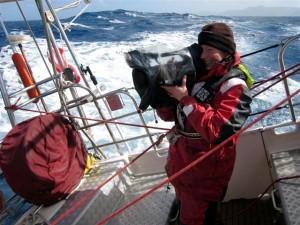 A primary function of the design is to accommodate as many uses as possible, with an emphasis on the requirements of research expeditions, voyaging and adventure cruising. The needs of on-board adventurers and campaigners, their camera teams, communications, administration and clerical requirements are all provided for. A large cabin (with desk and 220 volt power) in the centre of the vessel functions as an office for computer and clerical work. There is a large volume of stowage space together with appropriate stowage for special items such as camera and scientific equipment.
A primary function of the design is to accommodate as many uses as possible, with an emphasis on the requirements of research expeditions, voyaging and adventure cruising. The needs of on-board adventurers and campaigners, their camera teams, communications, administration and clerical requirements are all provided for. A large cabin (with desk and 220 volt power) in the centre of the vessel functions as an office for computer and clerical work. There is a large volume of stowage space together with appropriate stowage for special items such as camera and scientific equipment.
The yacht can carry up to 16 people on day trips and sleeps eight for offshore expeditions. There are three separate two-berth cabins.

